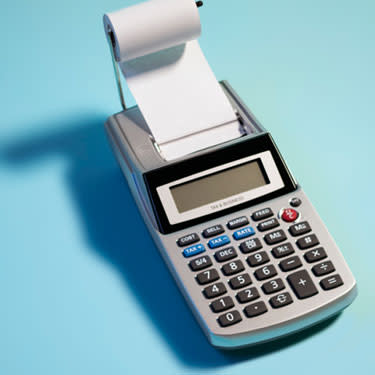The Freelancer’s Guide to Saving for Retirement
Know Your Options

More than 34 percent of U.S. workers (that’s 53 million people) work freelance — and will retire someday seeking their same standard of living.
So what do freelancers do with the money they’re saving for retirement without the option of a company 401(k)? Skip the low-earning savings account and choose a tax-advantaged retirement plan. They may look like a cryptic jumble of letters — IRA, SEP, SIMPLE IRA, or solo 401(k) — but we’re demystifying them to keep you comfy in old age.
Start With 15 Percent

Before we get into each plan, let’s take a look at your jumping-off point. Want to retire at 65? Start socking away about 15 percent of your yearly earnings by age 35, according to the Center for Retirement Research at Boston College. Push your retirement to age 70 and you can drop the savings plan to about 6 percent of your yearly earnings.
Sound steep? Think of it this way: Freelancers have advantages even when their income ebbs and flows, says Jean S. H. Schwarz, MBA, CFP, founder and managing director of Lumina Financial Consultants, LLC: “Those who work as solopreneurs have some special tax-related opportunities to optimize their financial situation.”
When a self-employed person files a Schedule C with their annual tax forms, for example, they can deduct a bunch of business-related costs: Think phone bills, work meals, transportation, and entertainment. You’re also eligible for a deduction by buying self-employed health insurance, plus any tax-free contributions you make to a health savings account (aka an HSA, which puts aside funds for health-care expenses), says Schwarz. So when you put cash into a retirement account, think of it as the cash you’ve been able to hold on to longer thanks to the tax deductions you’re getting for running your own business, says Schwarz.
All this amounts to more money to put toward your golden years.
IRA

The most popular plan is the Individual Retirement Arrangement (IRA). An IRA is an account set up at a financial institution that allows you to save for retirement either with tax-free growth (so you pay taxes before you put deposits in) or on a tax-deferred basis (jargon for paying taxes on what you end up withdrawing), says Cary Carbonaro, CFP, MBA, and author of The Money Queen’s Guide. And there are a few types of IRAs — traditional, Roth, and rollover to talk about. Each have different advantages.
The traditional IRA lets you make contributions with a tax break: Any earnings you contribute can grow tax deferred until you withdraw the money in retirement. Sure, you will be taxed when you eventually withdraw the money, but it may not be as high as you think: “Many retirees find themselves in a lower tax bracket than they were in pre-retirement,” says Carbonaro.
The Roth IRA works almost in the opposite way. “With a Roth IRA, you make contributions with money you’ve already paid taxes on (so, after-tax). That way, your money may potentially grow tax free and you get tax-free withdrawals from the plan in retirement, provided that certain conditions are met,” says Carbonaro. One condition, for example, is that you can’t withdraw until you are age 59½. Another caveat with a Roth: You can’t exceed a modified adjusted gross income of $129,000, if single.
The rollover IRA is great if you’re becoming a freelancer after moving from a corporate career. Instead of letting your old 401(k) languish, you can keep building on what you started by moving it into what is called a Rollover IRA. This IRA works like a traditional IRA, with one difference: It allows you to avoid any tax penalties that could kick in if you tried to put that money into another kind of retirement account such as a Roth IRA, according to Fidelity Investments.
SIMPLE

If you’re just starting your freelance career, or don’t have a lot to put away, set up a SIMPLE, aka Savings Incentive Match Plan for Employees, retirement plan, says Schwarz. SIMPLE plans have lower contribution limits than SEPs and solo (k)’s (broken down in the following slides) — in 2015, either your net income or $12,500, whichever is lower. True to its name, the SIMPLE plan is easy to set up and maintain. You contribute part of your pre-tax dollars to the plan and defer paying Uncle Sam until the money is distributed when you retire.
SEP

If you want to save more (up to 25 percent of your salary or $53,000 for 2015, whichever comes first), try a Simplified Employee Pension Plan (SEP), says Schwarz. These plans are easy to set up and manage, so you don’t need to hire a pro. To max out on this plan, you would need a net income of $265,000 or more. SEP investment earnings are tax deferred, so if you’re not into paying Uncle Sam until you finally need the money, SEP may not be your ideal plan.
Solo 401(k)

When you’re older and wiser, but still poorer than you’d like to see yourself in your golden years, consider a “solo (k).” This 401(k) plan for freelancers is also called a one-participant 401(k). If you’re over age 50, you’re allowed to contribute $24,000 a year instead of the typical limit of $18,000. Also, you’re allowed to contribute up to 25 percent of your personal business’ profits in the form of “profit-sharing,” akin to a big corporation’s structure.
“A 401(k) plan has more complexity than a SEP but is generally worth it for those who want to maximize their retirement savings,” says Schwarz. For example, the IRS requires an annual report for a one-participant 401(k), similar to the ones companies file. “Fortunately, many financial institutions have simplified plans for those who work as solo entrepreneurs,” Schwarz adds.
You’ll probably have to hire a pro to set this one up for you. But if you’ve earned a windfall that you want to shelter or are closer to retirement age, it’s a small price to pay.
Mix It Up

Not sure you want to commit to a single plan? Embrace the same attitude that likely got you freelancing in the first place: flexibility. Unlike the retirement plan you sign up for when you work for one company, you can open up a variety of plans when you’re on your own. (Caveat: Watch out for contribution limits when you have both an IRA and a Roth, for example, to avoid getting taxed on excess contributions.) “For someone who works for themselves, they have flexibility to see which plan works best for them. This can change from year to year depending on your income,” says Carbonaro. That kind of relief just may eliminate a few gray hairs down the road.
You Might Also Like:
IRA vs. 401(k) - What's the Difference?
What Do Millionaires Know That We Don't?
How to Save $1 Million in Your 401(k)

 Yahoo News
Yahoo News 
